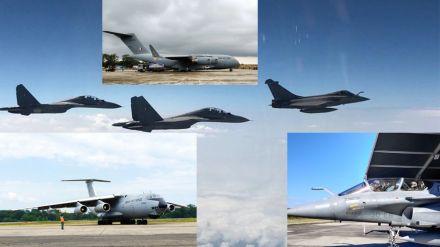To enhance interoperability through exchange of knowledge and experience Indian Air Force (IAF) and French Air and Space Force (FASF) are participating in a fortnight long bilateral exercise — ‘Garuda VIl’.
In the drill which is taking place at Air Force Station Jodhpur from Oct 26-Nov 12, 2022, IAF will also be sending the new Light Combat Helicopter (LCH) `Prachand’, fighter jets including — Su-30 MKI, Rafale, indigenous Light Combat Aircraft (LCA) `Tejas’ and also Jaguar fighter aircraft. According to the Air Force the Indian contingent will also include Mi-17 helicopters and combat-enabling assets like AWACS, AEW&C and flight refueling aircraft.
Also Read| India presents five-point agenda at UN terrorism meet, experts focus on threat from tech
From France there will be a contingent of 220 personnel, four Rafale fighter jets, and one A-330 Multi Role Tanker Transport (MRTT) aircraft.
During the whole duration of the exercise taking place in India, the IAF maintenance crew will ensure 100 percent serviceability of all the assets.
Aim of Ex-Garuda VII
Besides strengthening bilateral relations between the two countries, this will give a platform to the Air Forces of both sides to further enhance their operational capability and interoperability as well as sharing best practices. There will be professional interaction, enhancement of operational knowledge, and also exchange of experiences.
Previous Ex-Garuda
The exercise this year is taking place after a gap of two years and the first, third and fifth editions of Ex-Garuda took place in India — 2003, 2006 and 2014 and at three Air Force stations: Gwalior, Kalaikunda and Jodhpur. And, second, fourth and sixth editions of this exercise took place in France in 2005, 2010 and 2019.
Also Read| India to host UN counter-terrorism meet for first time, focus on threat from emerging tech
Outcome expected
According to a senior IAF officer, “At the end of this drill, the lessons learnt will help the Air Force to add more teeth to its war waging capabilities. The more such bilateral and multilateral drills the more lessons our forces learn which can be used later.”
